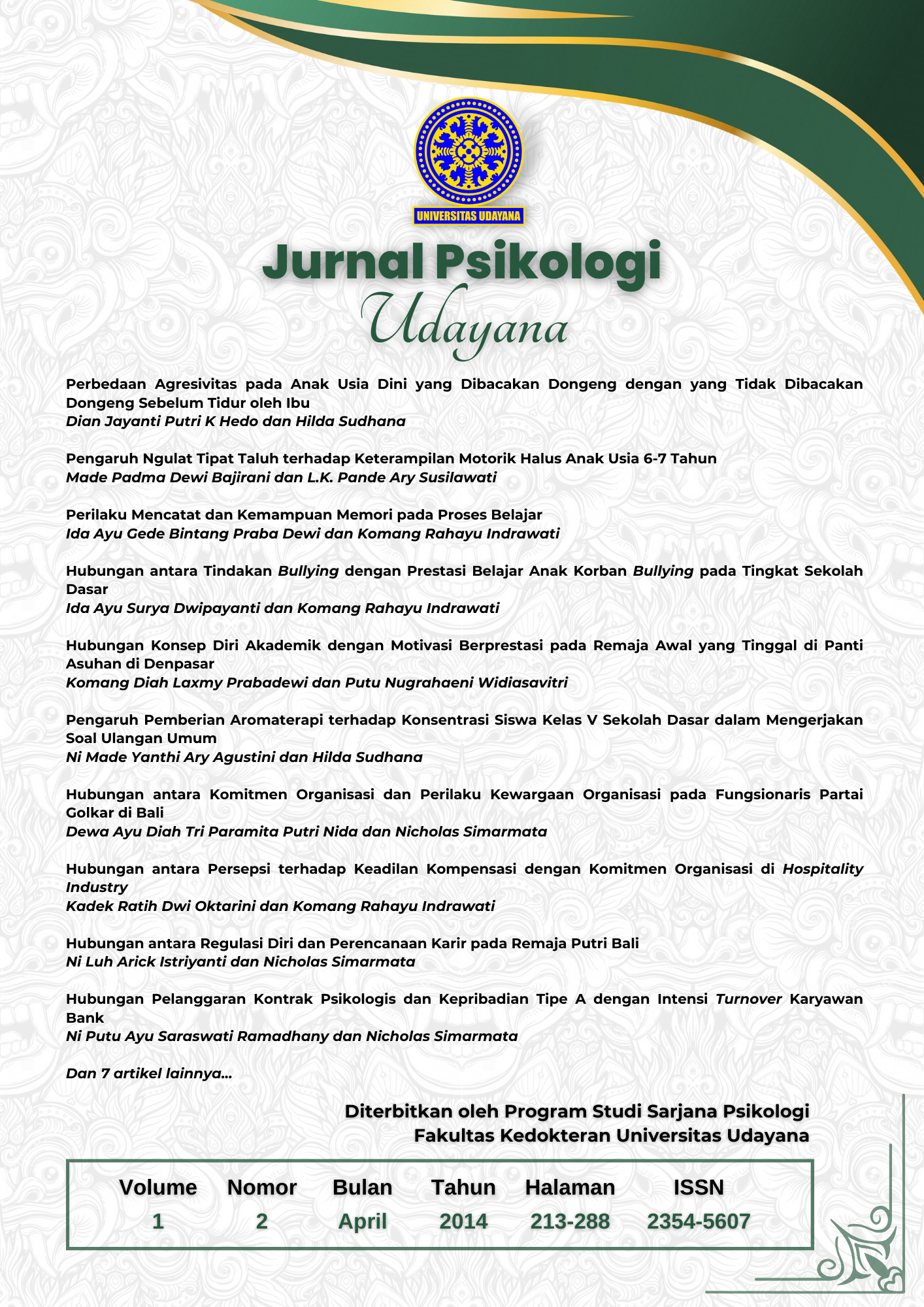Dinamika Kesetiaan Pada Kaum Gay
Abstract
Homosexual is an interest in feeling or in erotic, both are in predominant or exclusiveness against individuals who has a similarity in sexes violent or without involves interaction physical, while gay is term to mention man who likes fellow man as partners sexual, and have interest both in feeling or erotic, both in dominant and exclusive and also with or without any relation physical (Putri, 2013)
Faithfulness is a form of behaviors that performed recurrently that will eventually become a permanent nature. Directed toward your faithfulness also means that individual in relationship was able to rely to keep commitments together, which has agreed by Cloud&Townsand (in Sari, 2008). The aim of this research is to find out the dynamics of faithfulness to gay.
This research using qualitative methods by case study approach to describe the dynamics of faithfulness in gay relationship. To collecting data in this research used interview technique and used 4 subject. This research used thematic coding for analyzing data.
The result of this study suggest that in a world of a gay, most individuals within it are the people who run the principle of free life, where they hang out and behaving freely without any rules that tie it. Generally the respondents in this study say that faithfulness is crucial and absolutely there are in relationship but not all gay capable of running commitment to remain faithful.
Keywords: Homosexual, Gay, Faithfulness, Qualitatife, Case study
Downloads
Authors who publish with this journal agree to the following terms:
- Authors retain copyright and grant the journal right of first publication with the work simultaneously licensed under a Creative Commons Attribution-ShareAlike 4.0 International License that allows others to share the work with an acknowledgement of the works authorship and initial publication in this journal.
- Authors are able to enter into separate, additional contractual arrangements for the non-exclusive distribution of the journals published version of the work (e.g., post it to an institutional repository or publish it in a book), with an acknowledgement of its initial publication in this journal.
- Authors are permitted and encouraged to post their work online (e.g., in institutional repositories or on their website) prior to and during the submission process, as it can lead to productive exchanges, as well as earlier and greater citation of published work (See The Effect of Open Access).













